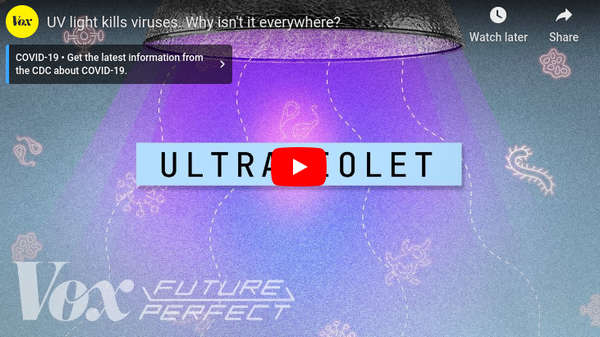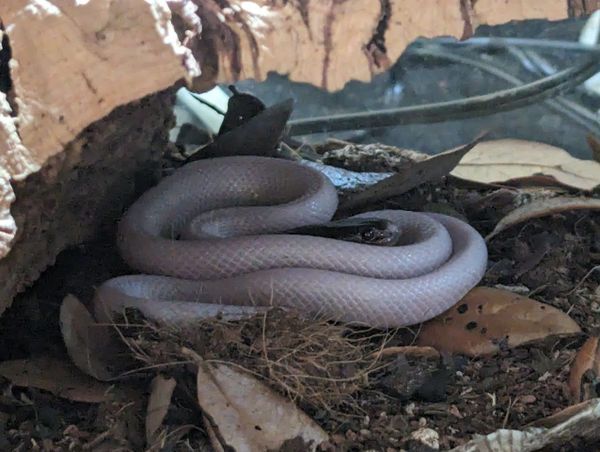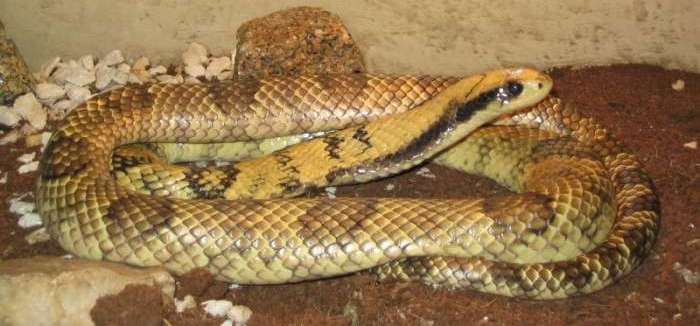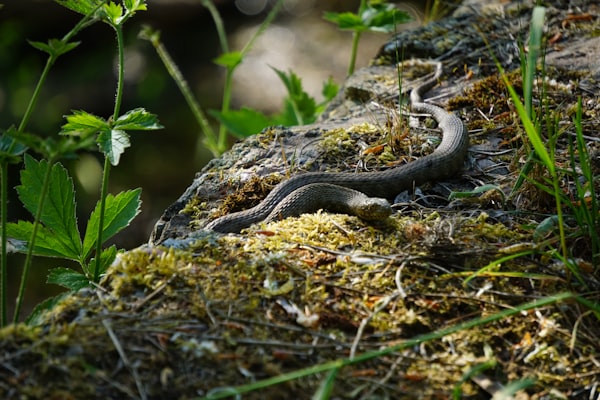UV Mythbusting: How Arcadia is Invested in Marketing Flawed Lamps to Reptile Keepers
It is well-known that many reptiles require UV lighting. The most reliable source of UV is the fluorescent lamp. This needs to and will change.

Introduction to Fluorescent Lamps
It is well-known that many reptiles require UV lighting for their successful keeping in captivity. The most reliable source of UV is the fluorescent lamp. Fluorescent lamps are a technology well over 100 years old and tracing major adoption as far back as World War 2 (1939-1941). The US department of energy states that more light was produced by linear [tube] fluorescent lamps than any other source by 1951. The history, adoption, and special usage of fluorescent lamps are so well known that the Wikipedia page for them is nearly 30 pages long. Millions of views have gone into How a fluorescent lamp works on YouTube.
Fluorescent lamps are known to be more efficient than incandescent lighting (incandescent lighting being bulbs that have a resistive filament inside - the traditional "light bulb"). Energy Star®, backed by the US government, states fluorescent lamps (CFLs in this instance) as using about 70% less energy than incandescent bulbs. Most of the energy of an incandescent bulb is emitted as heat - once again making the "cool" fluorescent lamps overall more energy efficient by reducing the possible counter-cooling (ie: air conditioning) required when using incandescent lamps.
What readers may not know is that fluorescent lamps are being phased out across the world for actually being less efficient, being difficult to manufacture, and containing hazardous material. This alone is enough for companies like Arcadia to refuse to release bulb manufacturing contracts, bulb sales, and their coveted "specialty use" label of fluorescent lamps. This doesn't only affect their fluorescent lamp but also their series of incandescent lamps.
Why We Rely on Fluorescent Tubes in the Reptile Hobby
The core of the need for fluorescent lamps in the reptile hobby is not just visible light - in fact, the visible light of a fluorescent lamp is a byproduct of the light we actually want. Fluorescent lamps include a specific characteristic in that their light is produced by an interaction that generates ultraviolet light. Ultraviolet light is known to stimulate the production of vitamin D in many living organisms. Vitamin D is essential to living organisms.
DISCLAIMER
The author is not telling you to use UV lighting or not to use UV lighting. At this time, our best efforts rely on the judgment of keepers along with empirical evidence. This is not intended to persuade you either direction. This article is intended to give readers a more complete picture of the state of reptile husbandry, its current pitfalls, and the current lack of information.
All that truly matters is that your animals are as healthy as your best effort can possibly afford.
A Note on "Vitamin" D
Vitamin D is very unique. A vitamin is a substance that a living animal can source from food and cannot be created in the body. A hormone is an essential substance created by the body.
Vitamin D is both a hormone and a vitamin.
There is a significant amount of disinformation surrounding vitamin D especially in the reptile hobby. Liam Sinclair of Reptiles and Research, in one of his "well researched" videos that will not be linked here for being complete disinformation, once claimed that standing in the sun prevents viral transmission. This, of course, is well busted as an actual strategy for disease control. Dr. Frances Baines of the reptile UV lighting group and others has also made similar claims about vitamin D. Groups all over the world (once again, not linked here for disinformation purposes) claim that supplemental vitamin D makes you smarter, benefits your development, and is completely safe.
These claims are nearly all debunked and not practiced in modern medicine. If you do intend to increase your vitamin D intake you have options including consuming more organ meats and/or taking a supplement. It is not advised to stand in the sun. For humans and many animals, this is very sound advice that can prevent injuries caused by UV light. Sun light is clearly labelled carcinogenic by the American Cancer Society and many other organizations around the world.
Many reptiles are thought not to need additional vitamin D supplementation (including UV light) because of their consumption of whole prey items. Their prey would include vitamin D as part of that prey animal's similar need for vitamin D. This is, rather unfortunately, a "best guess" scenario as there does not seem to be any research into this interaction in reptiles. It is firmly established in other animals. Dogs and cats, for example, don't actually produce any significant vitamin D from sun exposure and must have vitamin D in their diet - leading to the conclusion that their prey item consumption fulfills all of their dietary requirement for vitamin D.
If the sun is carcinogenic and supplements are proven in other animals then readers may question why we don't simply supplement every reptile.
The answer is that vitamin D, for any animal including humans, can reach toxic levels. For humans who are well tolerant there seems to be few (but not insignificant) cases of vitamin D toxicity. In animals, it may surprise readers that vitamin D is a well used rodenticide - a pest control substance that kills many small animals in use since roughly 2018.
We do not have sufficient studies for the appropriate dosing of vitamin D for reptiles throughout their growth and development. We could very easily overdose these animals and cause permanent irreparable health issues including death. On the other hand, if we do not provide vitamin D to these animals, then we may also cause permanent health issues including deformities - a problem reflected and well studied throughout animal husbandry.
Fluorescent lamp exposure is bad but it is, unfortunately, the best we have thanks to a mechanism of physiology. Naturally, an animal's body can inhibit production of vitamin D in toxic levels. Without a known tolerable dosage throughout an animal's development this mechanism offers a potentially safer method of raising levels of vitamin D appropriately.
The Toxicity of Fluorescent Lamps
The inclusion of mercury in the manufacturing process and operation of fluorescent lamps (they physically cannot work without it) is common knowledge. Toxic levels of mercury can and do escape from broken bulbs. Toxic levels of mercury are dumped into landfills creating a conservation issue where we are literally killing wild at-risk reptiles. It is worth noting that Arcadia lamps do not include any instructions on appropriate disposal of used lamps. That's potentially several fluorescent lamps dumped into landfills every 6 months (the manufacturer's suggested lifetime of the specialty use bulb).
While the components of a fluorescent lamp are recyclable (glass, tin, etc) fluorescent lamps are rarely recycled. These lamps are collected by agencies like Illinois Household Hazardous Waste. In the case of Illinois Household Hazard Waste, the bulbs are promptly crushed and stored in hazardous waste containers dumped into landfills.
Improper handling or disposal of used fluorescent and high density discharge lamps damages the environment. When broken, these lamps release mercury and other metals that damage the environment. In addition, when used lamps are collected as municipal waste and disposed in a solid waste landfill the possibility exists that the mercury they contain may be released into the landfill's leachte and then potentially migrate out the the landfill.
Illinois Household Hazardous Wastes
Arcadia makes some very interesting claims regarding the dangers of fluorescent lamps. In at least one message to users on social media the company has claimed that their lamps are recyclable. While they may believe each component of the lamp may be recyclable, because of the toxic nature, it should not be assumed that these lamps are reprocessed into recycled glass. The glass itself cannot be recycled into more fluorescent lamps because of the nature of the glass manufacturing process for fluorescent lamps. Mercury can be reclaimed by some specialty processors.
Whoever answers the Arcadia social media posts, which we can assume is John Courteney-Smith, completely misunderstands fluorescent lamps – which, you'll remember from earlier in the article, is John's second time not understanding a 100 year old technology that Arcadia is supposedly "innovating".
Fluorescent lamps are not sustainable. This is horribly misleading by Arcadia.
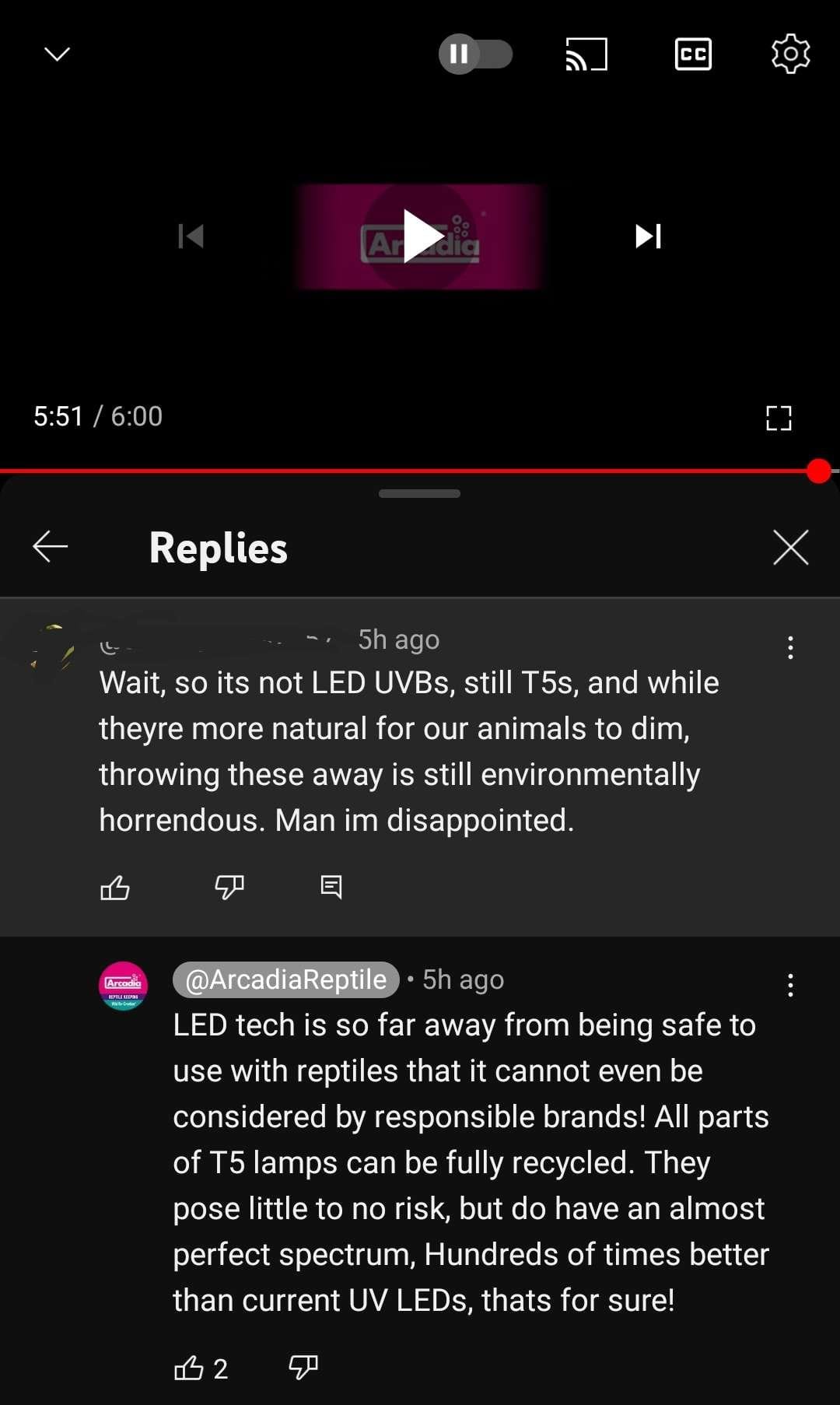
Not only is this claim entirely misleading, but they also take a moment to try to suggest that LED technology is somehow "hundreds of times" worse. The uninformed 👍 supporters of this post may not be aware of one very important thing: fluorescent lamps are soon to be an antique of the past.
Fluorescent Lamps are Being Phased Out and Banned
As of the time of this writing, there is a pending CFL (Compact Fluorescent Lamp) ban taking place in California in a matter of weeks. As of January 1st, CFLs will be banned in California followed by LFL (Linear Fluorescent Lamps) bans the following year. There are efficiency demands throughout the world to change to safer, more efficient, less toxic, and easier to produce LED lights. The US Department of Energy has recently announced efficiency requirements for general purpose lighting.
Arcadia is hoping to skirt these bans and requirements by claiming fluorescent lamps are irreplaceable specialty use bulbs required for all reptiles.
The new requirements put pressure on manufacturers to adopt the new expectations of lighting. Many companies, including Arcadia, are at risk of losing investments into fluorescent lamp contracts with manufacturers. They may also be left with massive warehouses of fluorescent bulbs that they should not or possibly cannot sell.
John Courteney-Smith wants to preserve his job at Arcadia Reptile while Monkfield Farms doesn't want to take a loss on a bad investment.
Arcadia's Exploitation of Vitamin D
Readers may not know of the Arcadia Reptile history.
Arcadia Reptile was formally Arcadia Bird and Reptile and, as of this writing, the author is under the impression they are owned by Monkfield Farms. You may also be familiar with Arcadia Aquarium products that line PetSmart shelves.
PetSmart is often a sore point of contention in the reptile hobby for many reasons. Some participants of the conversation claim they lure customers in and intentionally try to get them to impulse buy difficult species like chameleons while upselling packaged "all-in-one" style enclosures. This is certainly not a disagreeable point. Unfortunately many of these participants do not realize that Arcadia Reptile also has deals with PetSmart to rebox their products as the Thrive brand. The argument that Arcadia is providing equipment to help people be more successful is moot - if PetSmart is preying on unknowing customers for impulse buys and upsells then it is particularly unlikely they would opt for an additional and more expensive reboxed bulb.
It's all capitalism to Arcadia to allow further milking of a specialty lamp revenue source.
If Arcadia was truly committed to the reptile hobby, ethical practices, and innovation then there is no question that their research budget would be dumped into LEDs and more efficient heaters. Current LED bulbs can emit full spectrum lighting with longer lifetimes (some claiming up to 3 years, such as VivTech brand bulbs lead by a CVT), lower power consumption, and less waste.
Like the rest of the modern world, the reptile hobby and its communities need to step up.
Pervasive Arcadia Disinformation
The Animals at Home Network Podcast is one of John Courteney-Smith's favorite stages to make inaccurate statements. Previously (not linked here for disinformation, locate it on YouTube) John not only got the operation of a fluorescent lamp wildly incorrect but he also took the stage to claim that specialty use fluorescent bulbs cannot be replaced. John describes a fluorescent lamp operation as "noble gasses" interacting with mercury "melted by" elements – this is insane. In the operating area of a reptile UV lamp there would not be any mercury melting and fluorescent lamps only contain argon. The elements (cathode an anode) of a lamp heat to establish thermionic emission to begin the arc across the vacuum of the lamp. The description by an "expert" on this 100 year old technology is laughable.
Most recently, Arcadia has released a new "innovation" in fluorescent lamps (yet another investment in antiquated technology) with "dimmable T5 fluorescent bulbs". Their proof is in general UVI and their claims are how close it is to natural sunlight. It is trivial to go and find out the balance of UVA and UVB at dawn, noon, and dusk – the bulbs cannot physically deliver this. Arcadia's dimmable fluorescent bulbs are not innovative at all.

Burning in new T5 bulbs (also known as seasoning bulbs) by running them for a full 50 hours at 100% prior to dimming is an absolute MUST. This burn in period is strongly recommended by ATI and other T5 bulb manufactures as it allows the phosphors to be properly distributed throughout the whole T5 bulb and failure to do so will likely lead to spectrum shift and premature bulb failure.
As of now, the other could not locate any place that this information was not reflected on any Arcadia materials for their new dimmable bulbs. The average user of Arcadia products would not know to do this and would not have an appropriate place to complete this seasoning. The spectrum shift identified above could certainly produce undesired balance of UV light.
Regarding the spectrum of light emitted by Arcadia bulbs, it is interesting to see that people outside of the reptile hobby can identify the problem with Arcadia products.
At roughly 4:30 seconds into this video, user Brainiac75 points out the spectrum graph is incorrect and laughs at their marketing.
YouTube's Brainiac75 experimenting with an Arcadia bulb
You may notice that this user identifies all of the things Arcadia and its fan reject: that UV light is dangerous and that the Arcadia marketing is incorrect.
Arcadia Initiative Copycats
The BioDude is also subject to this exact practice of perpetuating odd understandings and even includes a section on how fluorescent lamps prevent impaction - quoting an inconclusive study on the role of vitamin D in human digestion.
Clint of Clint's Reptiles once claimed UV lamps make geckos golden and suggests UV lamps as cheap so "why not use them". As a biologist, Clint should also know that UV light is a carcinogen. Not only are his claims a logical fallacy but the obvious antithesis is "if UV is a carcinogen, why use them?" even if they are cheap.
Dozens of YouTubers constantly review Arcadia products with anecdotal claims of how their animals are healthier - with no comparison, no control, and no general data.
The components of a fluorescent lamp are recycleable - fluorescent lamps are rarely recycled.
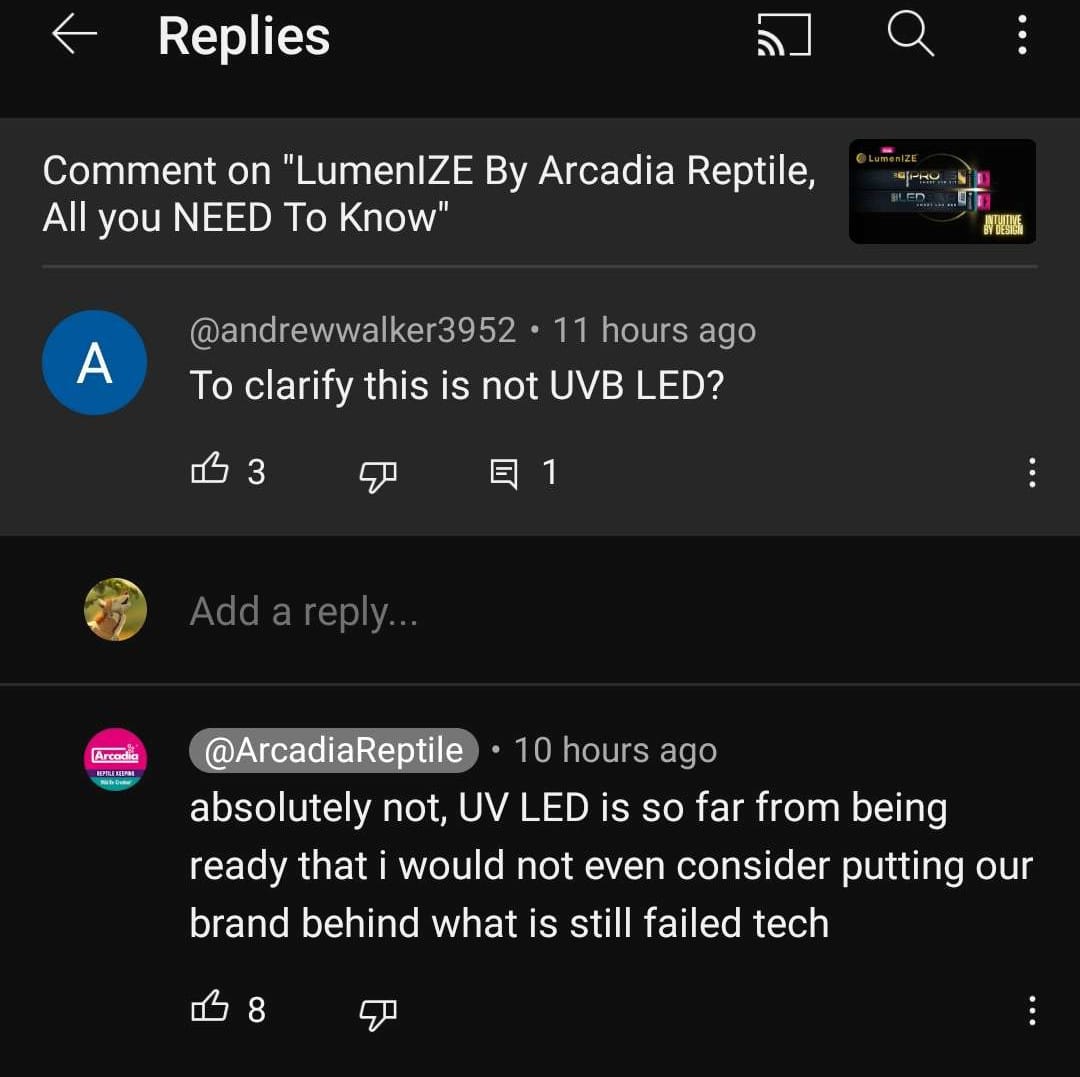
Contrary to Arcadia disinformation, LED UV is being used safely around humans. While "tuning" it appropriately for reptiles may still be a challenge there is no reason to address it as "failed".
Conclusion
The technology for the modern world is unarguably LED lighting. Rather than "innovating" a 100 year old technology, Arcadia should take center stage of pioneering what would be an industry changing technology that would even protect wild reptile populations.
Continued investments in fluorescent lighting are a dead end. These investments are what Arcadia wants to protect by making claims to help sell these devices before they have to possibly pay manufacturing contract fees and/or deal with warehouses of unusable bulbs.
Investments into studies about vitamin D in reptiles would be an amazing event that would help us safely deliver nutritional requirements to our animals while limiting, or removing, exposure to dangerous UV light.
LED lights are safer, less toxic, more efficient, and the future of reptile lighting independent of John Courteney-Smith and Arcadia's desire to continue cashing in.
On a final note, for anyone claiming that UV isn't dangerous or hasn't been proven dangerous to reptiles specifically...
Artificial ultraviolet (UV) radiation, such as in solariums or tanning beds, has been associated with an increased incidence of cutaneous melanoma in humans. In most reptiles, exposure to adequate natural or artificial UV light is essential for the synthesis of vitamin D3 and calcium metabolism. Therefore, given that many captive reptiles are exposed to artificial UV light daily, it has been speculated that UV radiation may contribute to the development of cutaneous chromatophoromas.
Chromatophoromas in Reptiles, 2022



